Spinal lesions: a comprehensive radiologic overview
- PMID: 40654524
- PMCID: PMC12245835
- DOI: 10.3389/fradi.2025.1577840
Spinal lesions: a comprehensive radiologic overview
Abstract
Spinal lesions encompass a diverse range of pathologies, including primary and secondary tumors, infectious processes, vascular malformations, traumatic injuries, and degenerative conditions, each with distinct imaging characteristics crucial for accurate diagnosis and management. Imaging plays vital roles in assessing lesion morphology, anatomical localization, and neurological impact, guiding clinical decision-making and therapeutic planning. This review systematically explores spinal lesions based on their anatomical compartments, highlighting key radiological features and providing a comprehensive reference for radiologists.
Keywords: MRI imaging; neoplastic and infectious pathology; radiological assessment; spinal lesions; spinal tumors.
© 2025 Alam, Syed, Siddiqui, Gunturi, Reddy, Alam and Rahman.
Conflict of interest statement
The authors declare that the research was conducted in the absence of any commercial or financial relationships that could be construed as a potential conflict of interest.
Figures


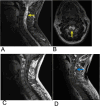








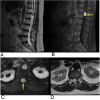

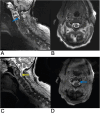









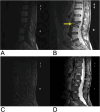


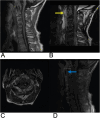

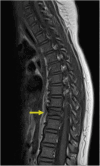

References
-
- Tomura N. Imaging of tumors of the spine and spinal cord. Nihon Igaku Hoshasen Gakkai Zasshi. (2000) 60(6):302–11. - PubMed
Publication types
LinkOut - more resources
Full Text Sources

